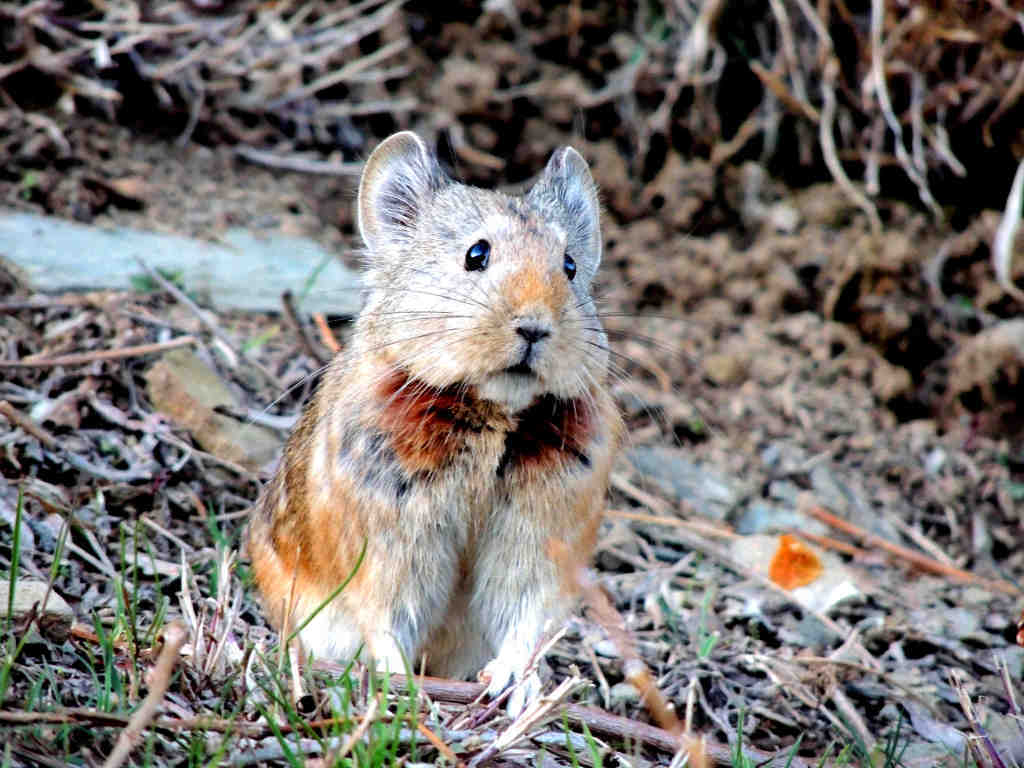
Ochotona royeli (Indian Pika)
| Common name | Indian Pika |
| Latin name | Ochotona roylei |
| Local name | Runda (Garhwali), Wuse-gagun ( Kashmiri) |
| IUCN/WPA/Indian status | Least concern/ IV / Locally Common |
| Social unit | Pairs and offspring |
| Size / weight | HBL: 15.5- 20.4 cm, EL: 1.7- 2.1 cm Wt. 100- 150 g |
| Description | The most common pika of the Himalayas, the Indian or Royle’s pika is a moderately large, richly coloured species, rufous- grey body, a chestnut head, shoulders and upper back, reddish purple throat and greyish white to dark grey under parts. The reddish colouration fades in winter, but the distinction between the upper and lower parts remains. It has moderately sized ears with sparse hair. The eyes are low- set and slightly arches. The female bears two pairs of mammae. |
| Behavior | It does not burrow but moves underground through existing burrow systems in rocky and scree slopes. It constructs hay piles, hoards limited food for winter and is crepuscular. |
| Distribution | Southern Ladakh and other regions of Jammu & Kashmir, Himachal Pradesh, Utterkhand, northern West Bengal and Sikkim |
| Habitat | Rocky or broken ground, pine deodar or rhododendron forest, and rock walls in human habitation. May prefer north-eastern aspect. |



